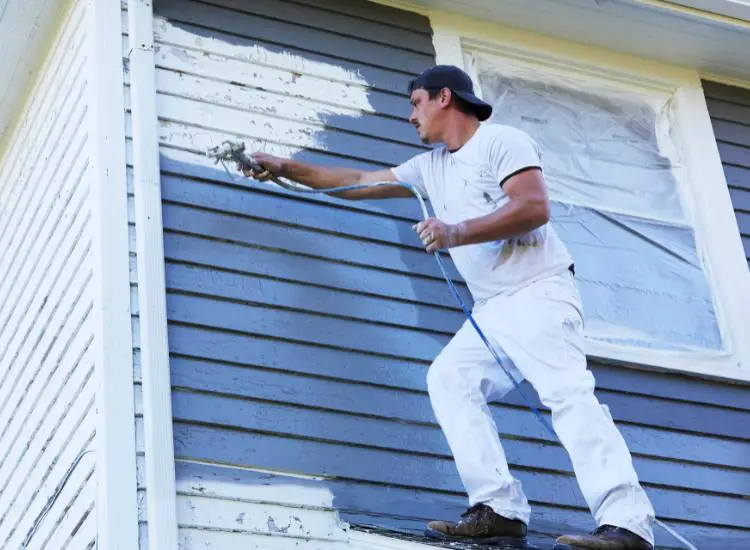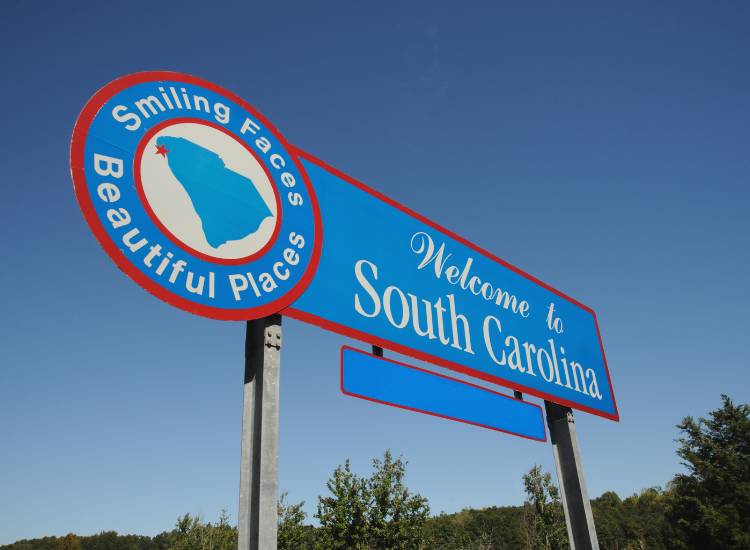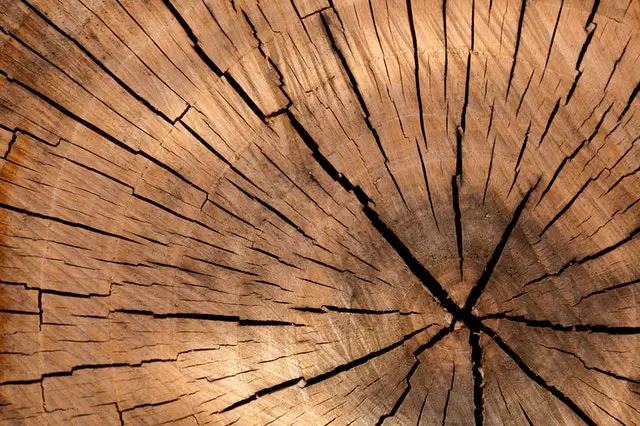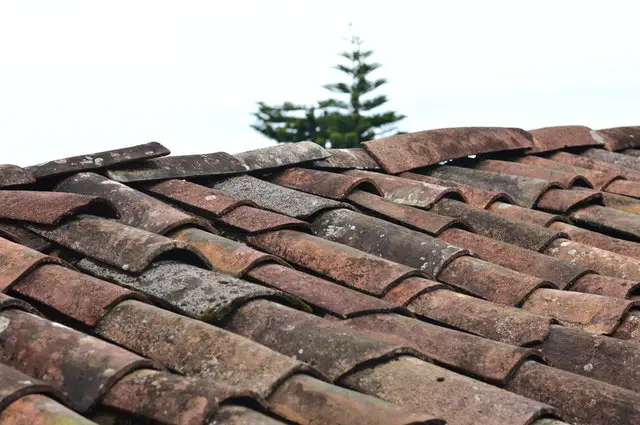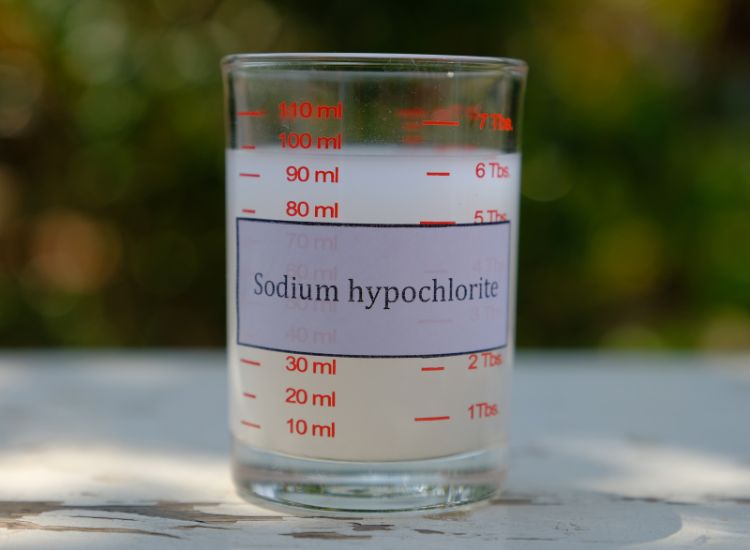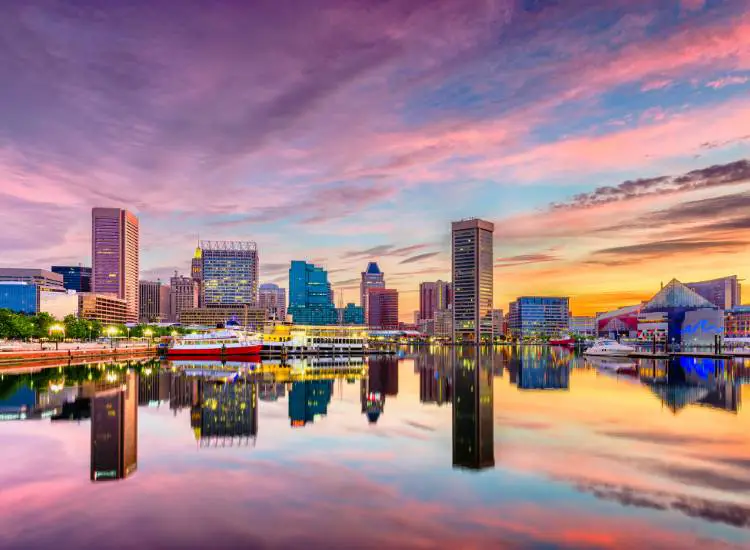Will Pressure Washing with Bleach Kill Plants?
Using a pressure washer can be an effective way to clean up neglected areas around your home. The machine delivers enough power to strip rust off of metal, but it’s also safe for cleaning the exterior of your car. But have you ever asked the question, will pressure washing with bleach kill plants?
Pressure washing with bleach will not kill plants when done correctly. There are two general ways for you to approach this task. You can either overwater the plants beforehand, or cover them with plastic tarps. Both of these methods will work and they will keep the landscaping alive on the exterior of your house.
How to Protect Plants When Pressure Washing
You will need to plan out the job before you even start your pressure washer. Map out the area and figure out the size, layout, and drainage. If you choose to use tarps it helps to measure the area to figure out what you need to cover the plants. And if you want to pre-soak the landscaping it helps to work in small sections at a time.
1. Overwater Plants
Overwatering, or pre-soaking the plants is the most efficient way to protect landscaping from harsh chemicals. The plants will be protected from any bleach that lands on them, because they won’t be able to soak up additional liquid. Overwatering the flowers and shrubs will guarantee that the plants have enough water and they won’t die.
With commercial pressure washing businesses you can normally see people working in teams. The first employee will usually work on the exterior of the house, while the second person continuously soaks the plants with water. This helps especially if you’re working in an area with direct sunlight, because the water can dry up much quicker.
2. Use Plastic Tarps
Another option to protect plants when pressure washing is to cover them with plastic tarps. This is more practical if you are working by yourself, as you can avoid switching back and forth from cleaning the house, to watering the plants. Just be aware that larger yards will require more tarps, unless you choose to work in small sections at a time.
Make sure to avoid cloth tarps as the bleach will easily soak through them. Another factor to consider is the weather. If it’s an extremely hot day, plastic tarps can actually have a negative affect on the landscaping. The plastic will create a greenhouse effect and heat up the plants underneath. If left covered for too long, this could eventually kill the plants.
3. Try Surfactant
In order to truly protect your plants, you could just avoid using bleach alltogether. Instead, try using surfactant, which is also called a surface-active agent. When added to a liquid detergent, this substance greatly reduces surface tension and increases the wetting and spreading properties. In other words, you can clean without making a big mess.
You might also see surfactant products labeled with superior cling ability. This can be very useful when working in tight areas where you don’t have much room for overspray. The substance will allow to to spray down an area and have the surfactant cling to the surface. This also helps to avoid liquid from landing on any nearby plants.
How to Pressure Wash Near Plants

Prep the Area
It helps to prepare your work area first whenever you are pressure washing outside. This not only means protecting the landscaping, but you also want to remove anything that will get in your way during the process.
Move any tools, cars, and outdoor lawn furniture, so it doesn’t trip you up and slow the job down. And don’t forget to pick up any ladders, or extension hoses you will need.
Start at the Top
It doesn’t matter what surface you are pressure washing, because it’s always a good idea to start at the top. During the cleaning process, gravity will do it’s job and pull contaminants down the sides.
If you were to start at the bottom for example, dirt and grime will pass over areas that were already cleaned. This makes things more challenging, as it only creates more work for you.
Make Adjustments
You will quickly learn that some surfaces will be dirtier than others when pressure washing. Areas that receive little to no sunlight might have more mold and mildew built up on them.
For these stubborn areas you will need to use a more aggressive cleaning nozzle in order to effectively strip off this type of growth. Just don’t use an attachment that’s too powerful, as it will damage whatever material you’re cleaning.
Final Rinse
Once the job has been finished, you will need to spray everything down for a final rinse. If you’re working on a house or roof, spray down these areas too remove any leftover soap.
Once this has been done you can rinse down all of the plants around the house one last time. This will guarantee that you have done everything you can do to clean and remove any chemicals that might be on the plants.
Clean Up
Even if your house looks perfectly clean, the area around it could still be a mess. Clean and put away any equipment used during the washing process so it doesn’t get damaged if left outside.
Don’t store your pressure washer with chemicals inside of it, as this can cause corrosion to the internal metal components. And don’t forget to wipe everything down on the exterior of the machine to avoid rusting.
Other Tips
Adjust the nozzle – If you choose to pre-soak the plants to keep them alive, make sure that you’re using the correct nozzle. An attachment that’s too aggressive will tear off flower pedals and even cut through roots. That’s why you need to use the least aggressive nozzle (like the white attachment) so you have a wider and safer spray pattern.
Pick the right day – Unfortunately we don’t have the ability to control the weather, but we can choose what day we want to work on. If you’re pressure washing around your house, it’s best to pick an overcast day for the project. You can skip overwatering the plants and use plastic tarps instead, without having to worry about too much heat killing them.
Use Eco-friendly soap – Some people get stuck on the idea that they have to use bleach when it comes to cleaning. Sure, bleach can help in some cases but it isn’t the best choice for everything. Using an Eco-friendly detergent can help protect local watersheds and it uses little to no chemicals. Plus, you won’t have to worry about protecting your plants.
Final Thoughts
Hopefully this article has helped you understand that pressure washing with bleach will not kill plants when done correctly. The most important step is planning out the job ahead of time, so you can keep the landscaping safe in the process.
You can either do this by overwatering the plants, covering them with plastic tarps, or even using an Eco-friendly soap. At the end of the day, there are many different approaches you can take, so try out various methods to see which you like best.
Further Reading
- The Ultimate Guide to Pressure Washing a Metal Roof
- When is Pressure Washing Season?
- Will Pressure Washing with Bleach Kill Grass?
Search Terms
- Will pressure washing with bleach kill plants?
- How to protect plants when pressure washing

